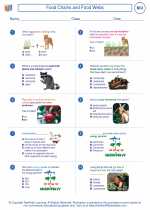Food Chains and Food Webs -> solar eclipse
Solar Eclipse
A solar eclipse occurs when the moon passes between the sun and the earth, blocking the sun's light and casting a shadow on the earth. There are three main types of solar eclipses: total, partial, and annular.
Total Solar Eclipse
A total solar eclipse happens when the moon completely covers the sun, revealing the sun's outer atmosphere, known as the corona. This type of eclipse is only visible from a specific area on Earth.
Partial Solar Eclipse
In a partial solar eclipse, the moon partially covers the sun, creating a partial shadow on the Earth's surface. This type of eclipse is visible from a larger area than a total solar eclipse.
Annular Solar Eclipse
An annular solar eclipse occurs when the moon is farthest from the Earth, causing it to appear smaller and not fully cover the sun. This creates a ring of sunlight around the moon's silhouette. An annular eclipse is visible from the region of the Earth that falls within the moon's shadow.
Study Guide
- What causes a solar eclipse?
- Describe the three main types of solar eclipses.
- How is a total solar eclipse different from a partial solar eclipse?
- When does an annular solar eclipse occur?
- Explain why a solar eclipse is only visible from specific areas on Earth.
- Research and describe any cultural or historical significance of solar eclipses in different civilizations.
Studying solar eclipses can provide insight into the motions and interactions of celestial bodies, as well as the impact of these events on Earth and its inhabitants.
.◂Biology Worksheets and Study Guides High School. Food Chains and Food Webs

 Worksheet/Answer key
Worksheet/Answer key
 Worksheet/Answer key
Worksheet/Answer key
 Vocabulary/Answer key
Vocabulary/Answer key
 Vocabulary/Answer key
Vocabulary/Answer key
